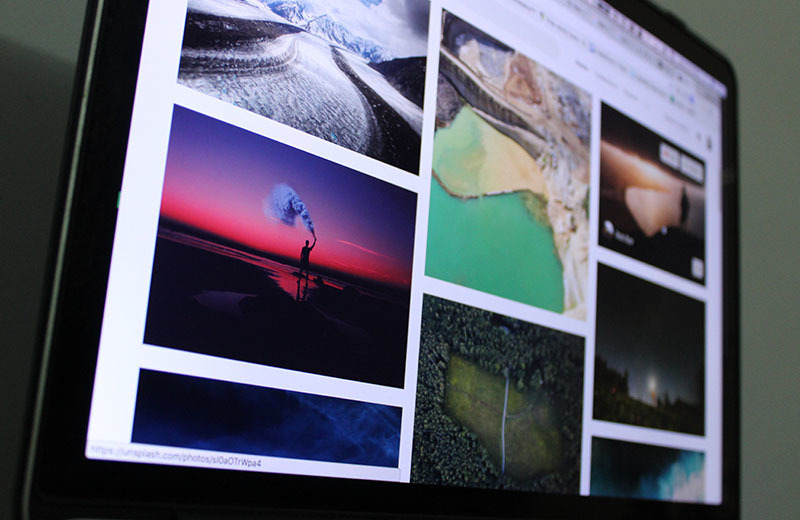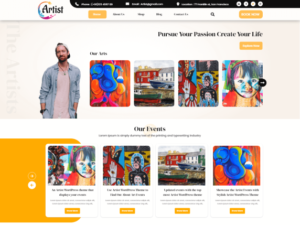In the world of art, mastering How to Make an Art Portfolio is an essential skill. Knowing how to make an art portfolio effectively can open doors to various opportunities, from art school admissions to professional showcases. In this guide, we’ll explore the process of creating an impactful art portfolio step by step
Art has the power to transcend boundaries and connect with individuals on a profound level. However, without a well-structured and thoughtfully curated art portfolio, the full impact of your artistic prowess might remain hidden. The process of portfolio creation involves meticulous selection, strategic organization, and the art of storytelling through your artwork. “How to Make an Art Portfolio” is more than a guide; it’s your beacon as you navigate the intricate path of showcasing your creativity to the world.
Imagine your art portfolio as a visual narrative—a tale that starts from the inception of your artistic journey and progresses through trials, experimentation, and triumphs. Each brushstroke, pencil line, or digital creation represents a chapter of your story, and the portfolio is the book that encapsulates it all. This guide delves into the nuances of selecting the right pieces, arranging them in a way that flows seamlessly, and presenting them with a touch of professionalism that mirrors your dedication.
Read Also: The University of Canterbury | Review, Tuition, Admission & Scholarships
By understanding how to make an art portfolio, you’ll be equipped to showcase your artistic journey and talents in the best possible light.
Quick Navigation
Understanding the Purpose of an Art Portfolio
At the heart of learning how to make an art portfolio lies the understanding of its purpose. An art portfolio is more than a collection of artworks; it’s a reflection of your skills, creativity, and artistic growth. this article demonstrates that depending on your goals, an art portfolio can serve different purposes:
- Applying to Art Schools: When applying to art schools, your portfolio showcases your artistic abilities and potential to excel in a creative environment.
- Professional Opportunities: If you’re aiming for freelance work or employment, your portfolio demonstrates your versatility and proficiency.
- Personal Expression: Sharing your art online or in exhibitions is a form of personal expression and networking within the art community.
Selecting Your Best Work
In the guide on How to Make an Art Portfolio, the emphasis is on quality rather than quantity:
- Showcasing Diversity: Your portfolio should include a diverse range of artworks, displaying different styles and techniques.
- Prioritizing Excellence: It’s essential to select artworks that showcase your technical skills and attention to detail.
- Relevance to Goals: Tailor your selections based on your objectives, whether it’s a school application or a professional showcase.
Organizing Your Portfolio
As the guide on How to Make an Art Portfolio explains, organization plays a crucial role:
- Visual Flow: Organize your artwork in a logical sequence that guides viewers through your artistic journey.
- Storytelling: The arrangement should tell a story of your growth as an artist, from foundational pieces to more advanced works.
Read Also: Top 15 Best Art Schools In The World Currently
Showcasing Technical Proficiency
The guide emphasizes showcasing your technical skills:
- Exploring Different Mediums: Include artworks that highlight your proficiency across various mediums, such as painting, drawing, and sculpture.
- Demonstrating Techniques: Select pieces that showcase your understanding of artistic techniques, like perspective and shading.
- Attention to Detail: Choose artworks that demonstrate your meticulous attention to detail, reinforcing your expertise.
Expressing Creativity and Originality
In the guide on How to Make an Art Portfolio, expressing your creative voice is highlighted:
- Embracing Experimentation: Don’t be afraid to include experimental pieces that showcase your willingness to push boundaries.
- Personal Projects: Incorporate personal projects that reflect your interests, adding a unique touch to your portfolio.
Read Also: The University for the Creative Arts (UCA) | Admission, Tuition, Programs, History
Highlighting Artistic Growth
The guide on How to Make an Art Portfolio focuses on showcasing growth:
- Balancing Old and New: Include both earlier works that show your artistic beginnings and recent pieces that highlight your progress.
- Learning from Challenges: Present artworks that represent challenges you’ve overcome, underscoring your journey of improvement.
Captions and Descriptions
The importance of captions and descriptions is highlighted on How to Make an Art Portfolio:
- – Providing Context: Captions offer insight into the inspiration and concept behind each artwork, engaging viewers on a deeper level.
- – Explaining Techniques: Briefly mention the techniques and mediums used, showcasing your versatility and skillset.
Choosing the Right Presentation Format
Choosing the right presentation format is emphasized:
- Digital Portfolios: The guide on How to Make an Art Portfolio suggests using digital platforms for online presentations, ensuring high-quality images and easy navigation.
- Physical Portfolios: For in-person presentations, invest in a professional portfolio case to protect and present your artwork.
Read Also: National University of Ireland – History, Programs, Scholarships, Tuitions
Formatting and Presentation Tips
The guide provides formatting and presentation tips:
- Consistency: Maintain consistent image sizes, backgrounds, and layouts for a polished and professional appearance.
- Visual Hierarchy: Strategically place your best artwork to capture viewers’ attention and maintain their engagement.
Including Your Artist Statement
Including an artist statement is a key component:
- Authentic Expression: Craft an artist statement that genuinely represents your journey, influences, and artistic philosophy.
- Succinct Essence: Keep it concise yet meaningful, encapsulating your artistic identity effectively.

Real-Life Examples
Real-life examples that can be used as a guide to Make an Art Portfolio:
Batec Animacion
This Barcelona-based studio showcases its production through the Carbonmade portfolio platform.
Kim Heejae
Heejae is an illustrator, designer, and art director based in Los Angeles. His website displays the projects he has worked on, with a short introduction before displaying lots of photos of the work.
Ang-Chi
Ang-Chi is an art student at the King’s School of Art + Design London and we are proud to showcase her portfolio.
Read Also: Hato Paora College – History, Programs, Scholarships, Tuitions
Final Checks and Revisions
The importance of final checks and revisions is underscored:
Proofreading: Ensure captions, descriptions, and text are error-free and polished.
Visual Coherence: Review the overall presentation to maintain a consistent and professional appearance.
In mastering the art of portfolio creation, learning how to make an art portfolio is a vital skill for any artist. By thoughtfully selecting, organizing, showcasing, expressing, and highlighting growth, you craft a narrative that resonates with viewers. Your portfolio is a dynamic representation of your artistic journey. With dedication, your portfolio becomes a showcase of your talents, ready to leave a lasting impression on the world.
See Also
Trust you found our article about “Discover How to Make an Art Portfolio: Guide with Tips & Examples “ helpful. Please follow our website for more interesting and informative articles like this.


